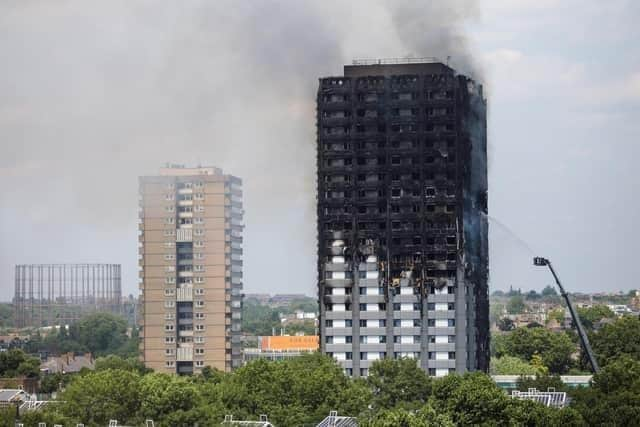Scotland cladding: Housing minister told to speed up programme to replace unsafe cladding on high rises
Scotland’s housing minister says he wants to speed up the removal of unsafe cladding on high-rise buildings, after being told homeowners are angry and frustrated at how slow the process is.
Following the Grenfell Tower fire in 2017 where 27 people died, a number of fire safety changes have been brought in, including a ban on flammable cladding on high-rise buildings.
Advertisement
Hide AdAdvertisement
Hide AdWork is now underway in Scotland to find out which buildings have unsafe cladding on them and how this can be safely removed.


The Scotsman exclusively revealed on Monday an in-principle agreement had been reached between the Scottish Government and developers, which could lead to them covering the costs for removing unsafe cladding installed when the properties were built.
This comes a year after former housing secretary Shona Robison announced the Government’s intention to agree a Scottish Safer Buildings Accord with developers. This accord is intended to see developers responsible for funding work on properties they have built, which have unsafe cladding on them.
However, the Government has now been told residents living in potentially unsafe high rises are angry it has taken two years to get to this point – and say this cannot continue moving forward.
Chris Ashurst, co-ordinator of the High Rise Scotland Action Group, said: “When we started this process two years back, the one thing we all said is we must give people hope. But hope deferred makes the heart grow sick and we are now two years down the road.
“People are sitting there really worried they can’t sell their properties or are living in what they think might be a dangerous home.”
He added: “Moving from conception to reality has proved to be enormously difficult and some people are very, very, very angry at how slow it is.”
Mr Ashurst and Fiona Kell, director of policy at Homes for Scotland, were both giving evidence on the issue to Holyrood’s housing committee on Tuesday.
Advertisement
Hide AdAdvertisement
Hide AdMs Kell added: “No one has any understanding of the sheer scale of this. Not just the remediation, but the resources behind getting this programme up and running is really substantial.”
A pilot programme to help identify which buildings are at risk has already been carried out – 105 buildings have now been looked at, and assessments are underway in 27 of these.
The committee was also told many homeowners are still unsure if they will end up having to pay for dangerous cladding to be removed from their buildings.
Mr Ashurst said: “The only innocent people in this whole scenario are the owners and they should not be the ones to foot the bill. I know the Scottish Government is committed to making others pay.”
The pair also said many are struggling to get insurance or are being quoted hundreds of thousands of pounds a year for cover, and said it was “unfortunate” there had not been a four-nation approach to this issue.
Housing minister Paul McLennan was also pushed in the committee meeting to detail how much he expects this process to cost and when people living in buildings with unsafe cladding can expect to see work starting. He was not able to give details on these points, stressing there was not a one-size-fits-all approach.
Mr McLennan did, however, say £400 million has been set aside to deal with “orphan buildings”.
These are buildings where the developer that initially built it cannot be located – for example, if that developer no longer exists as a business.
Advertisement
Hide AdAdvertisement
Hide AdThe cost of replacing cladding on these buildings will fall to the public purse, but Mr McLennan said the Government was committed to trying to find a responsible developer wherever possible.
“We need to make sure we take quicker action than what we have undertaken,” he said. “It is all about quickening the pace.
“The key message from me is we need to increase the pace of buildings being remediated – that is something we are looking to do.”
Comments
Want to join the conversation? Please or to comment on this article.